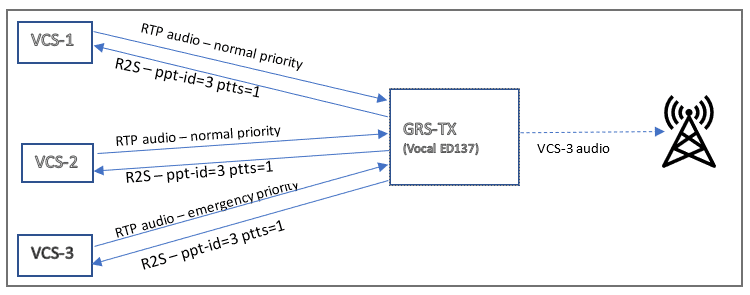Here are a few typical scenarios using VOCAL’s ED-137 module for both GRS and VCS. These modules need not only be used for ATM purposes; any RoIP implementation may benefit from tools that ED-137 supplies.
Scenario 1: Summing audio for transmission
Scenario 2: Prioritizing audio for transmission
All VCSs send their audio to GRS but only VCS-3 audio is transmitted due to its higher priority. VCS-1 and VCS-2 are locked out and this is indicated in the R2S RTP header with a ptt-id assigned to VCS-3 and the ptt-summation bit set. VCS-3 knows it is transmitting as the received ptt-id matches its previously assigned value.

When VCS-3 stops sending, the scenario becomes like scenario 1 with VCS-1 & 2 audio being transmitted.
A VCS can change its audio priority simply by altering the PTT mode using the send PTT API.
Scenario 3 – GRS multicasts audio to VCSs
Scenario 4 – Sending SELCAL tones
Scenario 5 – Sending and Receiving RTP Header extensions
VOCAL’s optimized RoIP software is available for the following platforms. Please contact us for specific RoIP supported platforms.



